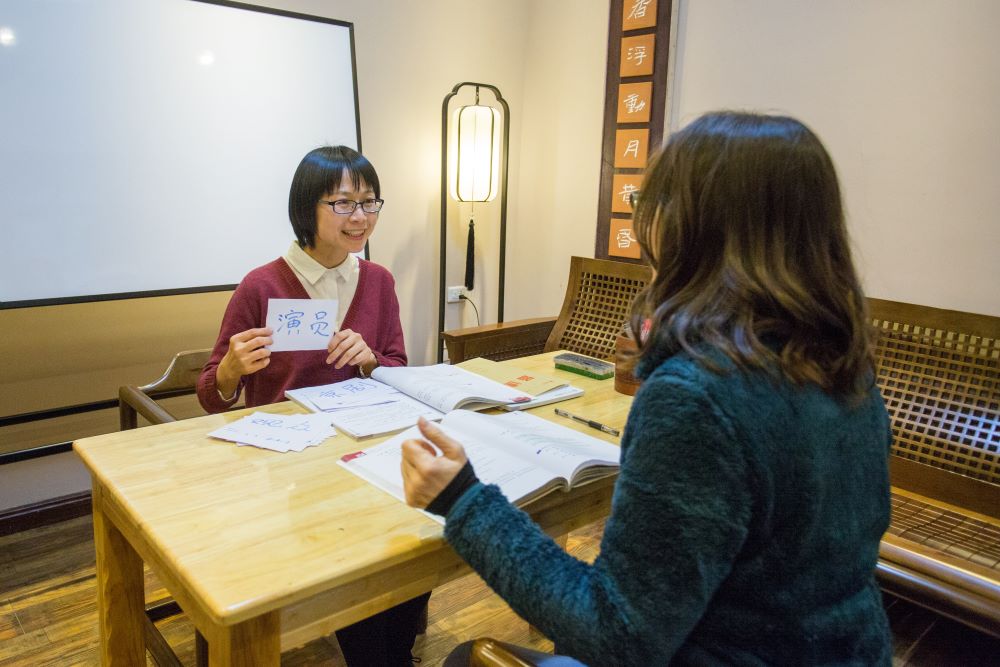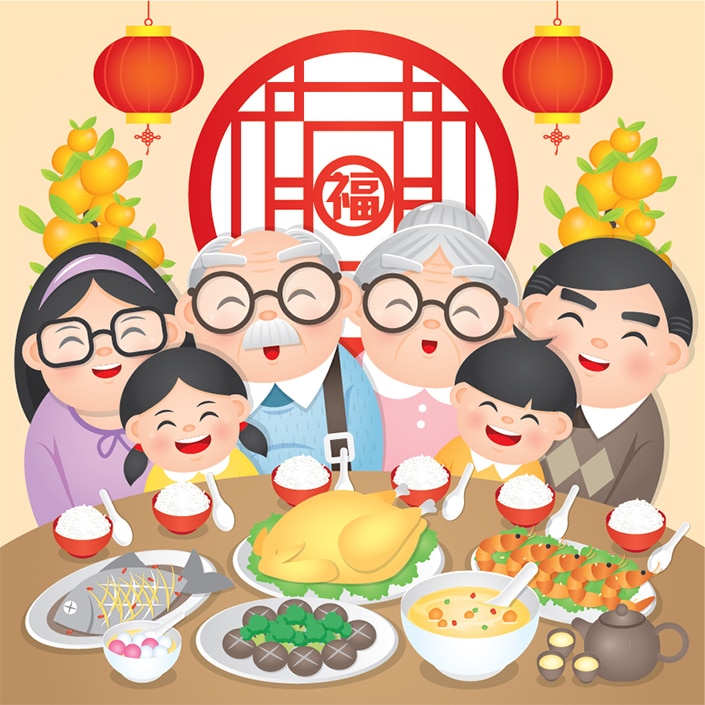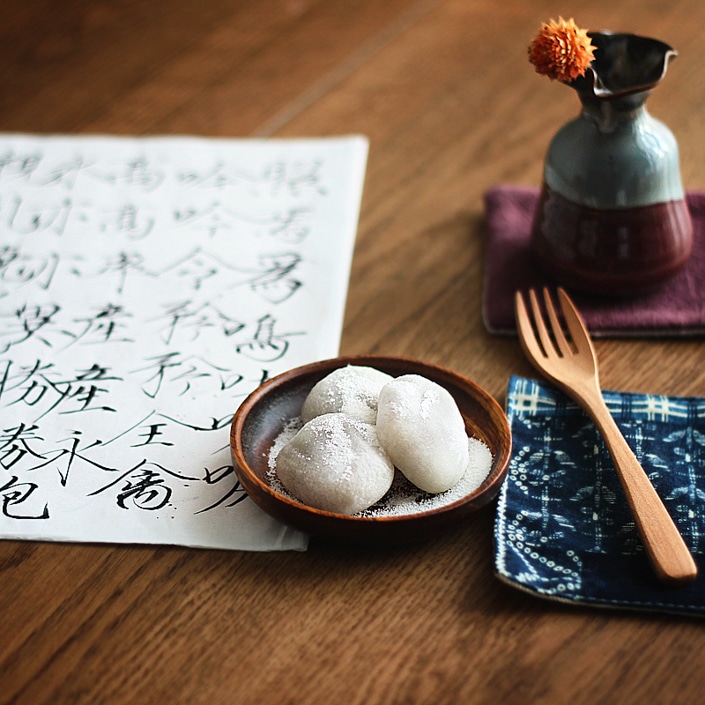What is Putonghua?
Learn Chinese in China or on Zoom and gain fluency in Chinese!
Join CLI and learn Chinese with your personal team of Mandarin teachers online or in person at the CLI Center in Guilin, China.
Putonghua, also called Standard Mandarin, is mainland China’s official language. As such, it’s also the version of Chinese that most international students learn. Read on to discover more about the history and current status of Putonghua in China.
Table of Contents
What is Putonghua?
“Putonghua” comes from the Chinese word 普通话 (Pǔtōnghuà in pinyin), which means “common tongue” or “common language.” Putonghua is the national language of the People’s Republic of China and is used in schools and workplaces throughout the country. It is commonly referred to as Standard Mandarin.
Although there are still many different varieties of spoken Chinese in use today, Putonghua is the lingua franca that people from all over China use to communicate with each other.
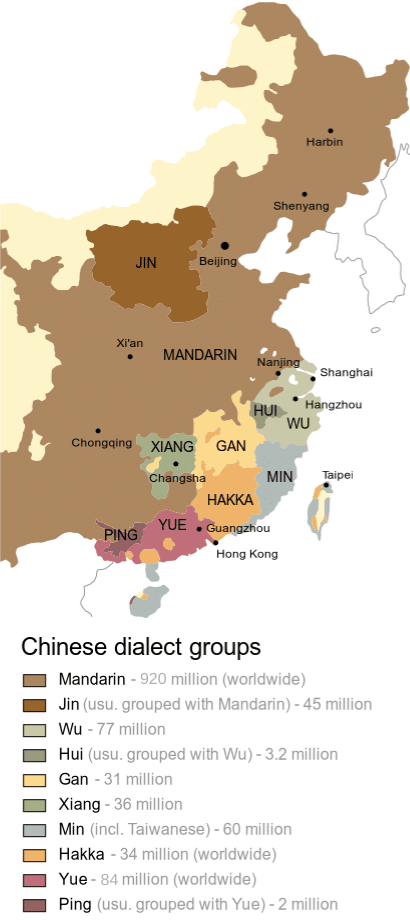
Putonghua, or Standard Mandarin, is the national language of China.
The History of Putonghua
To understand the status of Putonghua in China today, it helps to examine the history of its development.
Ming and Qing court dialects
Putonghua began as a court dialect used by imperial officials from different provinces to communicate with each other.
Before continuing, it is important to first clarify that written Chinese characters do contain some phonetic components and aren’t completely pictographic as commonly believed. That said, written and spoken Chinese are still quite different and the pronunciation of most characters is not at all obvious just from looking at their written form.
This situation is very different from Romance languages like French or Italian, in which the written language closely resembles its spoken form.
For centuries, the standard language of China was not a spoken language, but a written one. In imperial times, officials from various far-flung Chinese provinces easily communicated with each other in writing. This was because they all learned to read and write the same set of Chinese characters as part of the rigorous classical education that all officials received in preparation for taking the imperial exams.
If officials from different provinces wanted to communicate face-to-face, however, things became much more difficult due to the existence of many different regional varieties of spoken Chinese. To solve this problem, a common language that officials could use to communicate among themselves developed during the Ming (1368–1644 CE) and Qing (1644-1912 CE) dynasties.
This common court language was called 官话 (Guānhuà), which can be translated as “court dialect” or “official speech.” It was originally based on Chinese dialects from the area in and around Nanjing, the capital of China during the Ming.
Beijing became the capital in 1420, but it took several centuries for this change in geographic location to become reflected in the common court dialect. Indeed, Beijing dialect (方言 fāngyán) didn’t become the basis for court dialects until the mid-19th century, when only a few decades of the Qing dynasty remained.

Chinese officials during the Ming dynasty developed special court dialects that they could use to communicate amongst themselves.
The origin of the term “Mandarin”
Oddly enough, the Portuguese were the first to use the word “Mandarin” to refer to the Chinese language.
During the Ming dynasty, Portuguese explorers began colonizing parts of Asia, including the Malay Peninsula, Malacca and Macau. Soon, Portuguese Jesuit missionaries arrived in China, and some even began working in the Chinese court.
The Portuguese referred to the Ming court officials as mandarim, a word that came from a Malay word for “minister” which was based on a Sanskrit word with the same meaning. Eventually, mandarim became the English word “Mandarin'' that we know today.

The modern term “Mandarin” comes from a Portuguese word used to refer to the language spoken by Chinese officials.
Guoyu and the republican period
Before the establishment of the Republic of China, the 官话 (Guānhuà) spoken court dialects were almost exclusively languages of the elite. Regular people throughout China spoke a huge variety of different Chinese dialects, and most could not understand or speak 官话 (Guānhuà).
In its last years, the Qing dynasty made some attempts to establish a national language, which it dubbed Guoyu 国语 (Guóyǔ). However, it wasn’t until the republican period that such attempts began to bear fruit.
After the Republic of China was founded with Nanjing as its capital, linguists (语言学家 yǔyán xuéjiā) quickly created a new standard language that was based both on northern dialects and on dialects from Nanjing and the surrounding region. Unfortunately, this new language was so unlike anything that people actually spoke in real life that it failed to gain widespread acceptance.
The linguists kept trying, though, and in 1932, a dictionary of a common language based on northern prestige dialects from in and around Beijing emerged. This dictionary was called Vocabulary of National Pronunciation for Everyday Use (国音常用字汇 Guóyīn Chángyòng Zìhuì). Eventually, its contents would become the foundation for modern Putonghua.

The dictionary which helped establish the foundation of Putonghua was published in 1932.
Putonghua and the post-civil war period
After a bloody civil war, the People’s Republic of China came into being in 1949. Afterwards, the common national language continued to be referred to as 国语 (Guóyǔ) until 1955, when its name was changed to Putonghua (普通话 Pǔtōnghuà). Immediately afterwards, in 1956, Putonghua officially became the standard language of the People’s Republic.
Initially, there were very few people who could speak or understand the new standard language. This was especially true in areas where people spoke minority languages or varieties of Chinese that differed greatly from the northern dialects spoken in and around Beijing.
After mainland China began referring to its common language as Putonghua, Taiwan continued to refer to its common language as Guoyu. Although Guoyu and Putonghua were initially the same, some minor differences between the two have emerged over time.

Putonghua became China’s official language in 1956, less than a decade after the founding of the PRC.
Putonghua today
For a language that has only been recognized as China’s official national standard for less than a century, Putonghua has already become impressively popular in China, as well as internationally.
In mainland China today, the government works to promote Putonghua in schools and workplaces, where signs exhorting everyone to speak “civilized language” can sometimes be seen.
While some of China’s minority languages enjoy some official recognition, especially at the regional level, many of them are gradually being replaced by Putonghua, which is often seen as the key to academic and economic success.
Some parents purposefully do not teach their children the local language or dialect in an attempt to ensure that they will develop standard Mandarin pronunciation unaffected by a local accent.
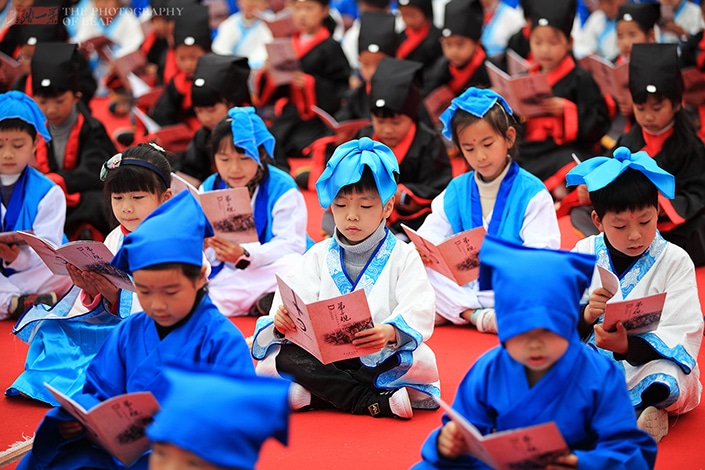
Many Chinese parents see mastering Putonghua as an important component of their children’s education.
How many people actually speak Putonghua?
Despite the growing influence of Putonghua in mainland China, as late as 2014, only around 70% of China’s population could speak it “to some degree,” while only one tenth of those able to speak it were actually considered fluent.
Less than a generation ago, it was common for teachers in remote rural areas to be largely unable to speak Putonghua themselves. Since most children and parents in these areas also only spoke the local dialect, children in such schools often had difficulty mastering Putonghua. Recently, however, the Chinese government has begun to correct this problem by requiring teachers to prove their Mandarin proficiency before beginning their careers as educators.
Because there are still so many Chinese people who are not completely proficient in Putonghua, the official Putonghua Proficiency Test (普通话水平测试 Pǔtōnghuà Shuǐpíng Cèshì) has become increasingly popular in recent years.
Passing this Chinese proficiency test is a requirement of native speakers made by certain employers. The scores required vary depending on the position, with those working jobs like TV correspondents and broadcasters needing the highest scores.

Despite government attempts to promote Putonghua, many older people in China still can’t speak it well.
Luanping: Putonghua’s ancestral hometown?
Today, it’s frequently assumed that Beijing is the place to go if you want to hear people speaking perfectly standard Putonghua on the streets. If you’ve ever actually been to Beijing, however, you’ll notice that this is not strictly true.
In reality, people in Beijing speak Beijing dialect, which features heavy use of the “r” sound, known as 儿化 (érhuà). Although Putonghua does feature the addition of some “r” suffixes, their use is nowhere near as extensive as in Beijing dialect.
So, where can you go to hear people speaking a pure, unadulterated version of Putonghua as their native language? Turns out the answer is Luanping (滦平 Luánpíng), a small county in Hebei Province which lies outside the Great Wall about 100 miles (165 kilometers) from Beijing.
Luanping has a population of only 315,000, which is quite small by Chinese standards. However, the people there speak the world’s most perfect Putonghua.
When linguists were working on formulating an acceptable national standard language in the 1950’s, they visited Luanping, took notes and made recordings documenting residents’ speech. They then used the materials they collected to help standardize the pronunciation of Putonghua.

Luanping, located just outside the Great Wall, is a great place to visit if you want to hear perfect Putonghua.
A turbulent history
The purity of Luanping residents’ spoken Chinese can be traced back to the turbulent history of the region around the Great Wall.
In the early Ming dynasty, the region outside the Great Wall where Luanping is located was being threatened by the Mongolians. The emperor ordered all of the residents to vacate the area, which was subsequently left empty for over 200 years. Although various local dialects once existed in and around Luanping, these disappeared when the original residents were relocated.
Eventually, the Mongol threat receded. During the Qing dynasty, people were allowed to move back into Luanping, and most of those who did were imperial officials, their families and their servants. Having come from Beijing, this population spoke a very standard form of the court dialect that was being used in Beijing at the time.
Even when not serving as China’s capital, Beijing has long been an important political, economic and cultural center that attracts migrants from all around China. Over the years, the dialect of Mandarin spoken in Beijing began to change as it absorbed various different linguistic features of the dialects brought by migrants.
Luanping, on the other hand, was a small, forgotten, and somewhat isolated county. As such, unlike Beijing, it was able to preserve a pure form of Beijing-based court dialect that was originally brought there by Qing dynasty officials.
It was this pure Luanping form of court dialect that People’s Republic linguists discovered and decided to use as the basis for the Putonghua that students in China and all over the world learn today.

Luanping was once home to many Qing dynasty officials and their families.
Your gateway to modern China
Needless to say, if you’re an international student planning on studying abroad in China or a professional hoping to work in the country long-term, learning to speak Putonghua is a must.
Being able to understand Putonghua is also necessary if you plan on getting a high score on the HSK Chinese proficiency test (汉语水平考试 Hànyǔ Shuǐpíng Kǎoshì). While the test doesn’t contain a speaking section, mastering the listening section requires an understanding of Putonghua. Students interested in obtaining proof of their proficiency in spoken Putonghua can also consider taking the HSKK (汉语水平口语考试 Hànyǔ Shuǐpíng Kǒuyǔ Kǎoshì).
The best way to learn a spoken language like Putonghua is full language immersion, either in China or online. The more Putonghua you learn, the better understanding you’ll have of China’s history, culture and people.

Learning Chinese in China is the best way to master Putonghua.
| Hànzì | Pīnyīn | Definition |
|---|---|---|
| 普通话 | Pǔtōnghuà | Standard Chinese (pronunciation); literally "common speech" |
| 方言 | fāngyán | dialect |
| 口语 | kǒuyǔ | spoken language |
| 官话 | guānhuà | official language; court dialect |
| 语言学家 | yǔyán xuéjiā | linguist |
| 国语 | Guóyǔ | Guoyu; literally "national language; name for the equivalent of Putonghua in Taiwan |
| 国音常用字汇 | Guóyīn Chángyòng Zìhuì | Vocabulary of National Pronunciation for Everyday Use; early Putonghua dictionary |
| 儿化 | érhuà | addition of an "r" suffix to the ends of words common in certain varieties of northern Chinese |
| 普通话水平测试 | Pǔtōnghuà Shuǐpíng Cèshì | Putonghua proficiency test for native Chinese speakers |
| 汉语水平考试 | Hànyǔ Shuǐpíng Kǎoshì | the HSK; Chinese proficiency test for non-native students that measures listening, reading and writing |
| 汉语水平口语考试 | Hànyǔ Shuǐpíng Kǒuyǔ Kǎoshì | the HSKK; Chinese proficiency test for non-native studens that measures speaking |

Anne Meredith holds an MA in International Politics and Chinese Studies from the Johns Hopkins School of Advanced International Studies (SAIS). As part of the graduation requirements for the program, Anne wrote and defended a 70-page Master's thesis entirely in 汉字 (hànzì; Chinese characters). Anne lives in Shanghai, China and is fluent in Chinese.








